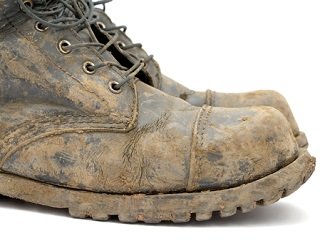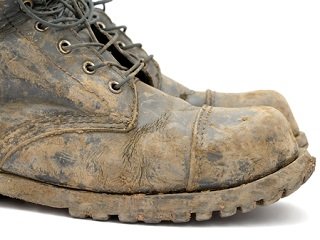 One of the great things about outdoor gear is that it’s made to last. The trails throughout this country can be demanding and tough, so your gear needs to be able to handle them. As tough as outdoor equipment is, though, giving your gear a little TLC now and then will go a long way towards extending its life. Hiking boots are an integral part of your outdoor activities, but they, like many items in your arsenal, need to be taken care of properly, which means cleaning and/or treating them throughout their lifespan. Keep reading for a few tips on how to do this the right way.
One of the great things about outdoor gear is that it’s made to last. The trails throughout this country can be demanding and tough, so your gear needs to be able to handle them. As tough as outdoor equipment is, though, giving your gear a little TLC now and then will go a long way towards extending its life. Hiking boots are an integral part of your outdoor activities, but they, like many items in your arsenal, need to be taken care of properly, which means cleaning and/or treating them throughout their lifespan. Keep reading for a few tips on how to do this the right way.
When you get a new pair of boots, there isn’t much you need to do to them. It’s smart to hold on to the care instructions, though, because these will detail the specific needs of your boots. Also, be sure to break your boots in before heading out for an extended trip.
It’s important to clean your boots after every hike, for many reasons. Every time you strain your foot and your boot stretches, it allows dirt or sand to creep into the materials and create erosion. Mud, as well, can harm your boots as it dries. This sucks moisture from the leather, which can cause cracking, premature aging, and a loss of flexibility.
You never want to put your boots in the washing machine. Instead, use a brush to gently remove any dust and dirt. Furthermore, it’s smart to add running water and a specialized boot cleaner, saddle soap or a mild dishwashing soap. You don’t want to use hand soap or detergents, as they can dry your boots out or leave residue. If there’s mold present, use a solution of 80% water and 20% vinegar. Also, for the best results, remove the laces prior to cleaning.
After washing your boots, you’ll want to dry them at a normal temperature. Remove the insoles and allow them to dry separately, as well. You never want to put your wet boots next to a heat source to dry. This can destroy the upper, causing the leather to turn brittle, or shrink and curl. If you need to dry your boots faster, you can place them in front of a fan, as long as they’re still in a normal temperature setting. You can also stuff newspaper into each boot, making sure to change the paper periodically. Also, boots tend to dry faster when they’re upside down, so keep that in mind, too.
When you’re not using them, store your boots in a place where the temperature is consistent and normal. Do not store them in your attic, garage, the trunk of your car, or any unventilated spaces where heat can rapidly accumulate or fluctuate.
When neglected, even the most durable pieces of outdoor gear can wear down quickly, and your boots are no exception. Being diligent about cleaning them after use will help ensure you get many years out of them. Be sure to return for Part Two, where I’ll highlight more in-depth ways of prolonging the life of your boots.








